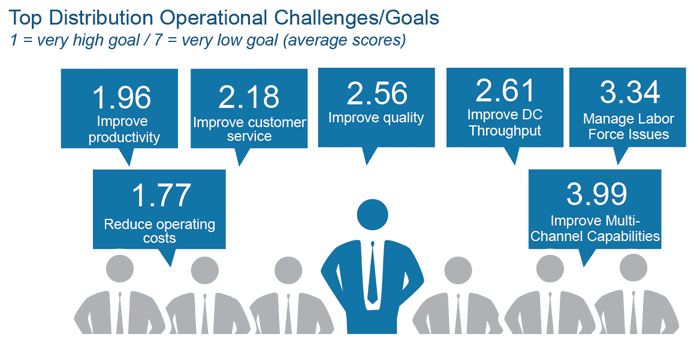From SCDigest's On-Target E-Magazine
- May 20, 2014 -
Supply Chain News: How Do Users View and Rank Different Distribution-Related Technologies?
Voice Solutions Viewed Vary Favorably, Survey Results Find, but are Companies Finally Starting to Look at RFID in the DC?
SCDigest Editorial Staff
How do distribution managers view a wide range of distribution center hardware system technologies?
Answering that question was the aim of a recent SCDigest survey and related report, just released, titled A User's Perspective on Distribution Technology Alternatives.
The full report can be downloaded here: A User's Perspective on Distribution Technology Alternatives
SCDigest Says: |
 |
| We are especially interested to see that 24.5% of companies say they are piloting or investigating use of RFID in distribution, even though a very small percentage of firms are actually using RFID in the DC currently. |
|
What Do You Say?
|
|
|
|
The report focused on six different technologies: radio frequency (RF) systems, Voice technology, pick-to-light, traditional conveyor/sortation systems, RFID in distribution, and robotic picking.
This an interesting mix of technologies: There are three technology areas that have been in the market for more than two decades, such as radio frequency (RF), sortation systems, and pick-to-light.
At the newer end of the spectrum, at least in a distribution environment, are technologies such as RFID and "robotic picking systems" of all kinds, which are promising but have had relatively little deployment activity to date.
In the middle of that continuum is Voice, which has gained substantial market share over the past decade, especially for order picking, and thus was a special focus of this research.
All told, more than 150 usable responses were achieved in the study, with a decent mix of large and mid-size companies, and a broad mix of business sectors represented.
As the report notes, however, in some respects company size may matter less in distribution than in other areas of the supply chain.
"One thing that is unique about distribution is that company size is often not a great predictor of DC operational complexity," the report notes. "For example, one $300 million consumer goods company shipping all of its revenue from a single facility can have much more complex DC operations than a multi-billion dollar food company shipping largely full pallet loads from a network of 10 facilities."
What business and supply chain challenges and opportunities are at front of mind for logistics executives and managers in 2014?
Not all that different than in years past, it seems, as shown in the graphic below. The scores are based on a rating from 1 to 7, with one being the most important challenge, and then calculating an average of all responses.

Source: Supply Chain Digest
As can be seen, reducing operating cost ranked as the top priority based on an average all the scores, followed closely by the related issue of improving productivity. Some things never change.
(Distribution/Materials Handling Story Continues Below
)
|